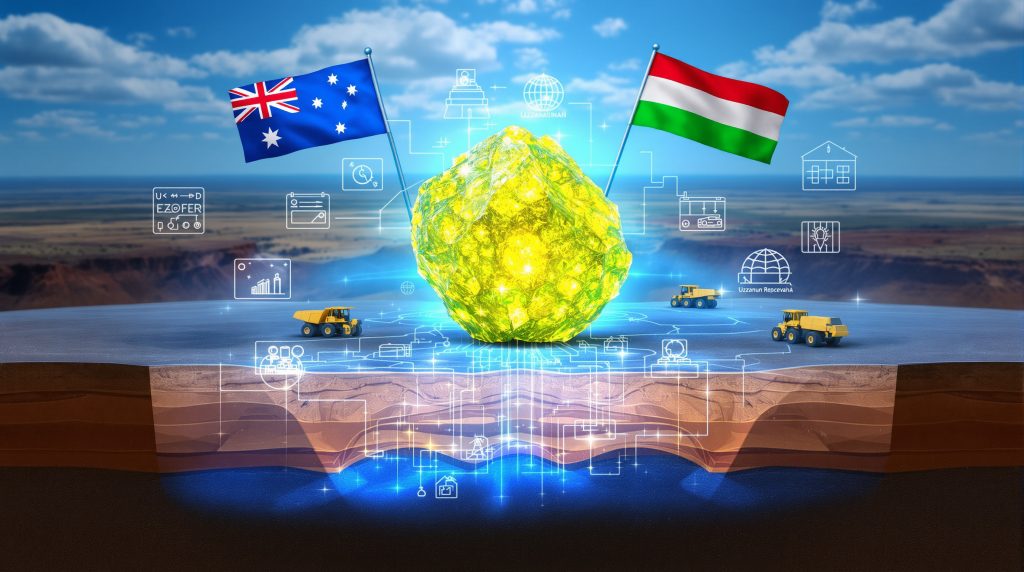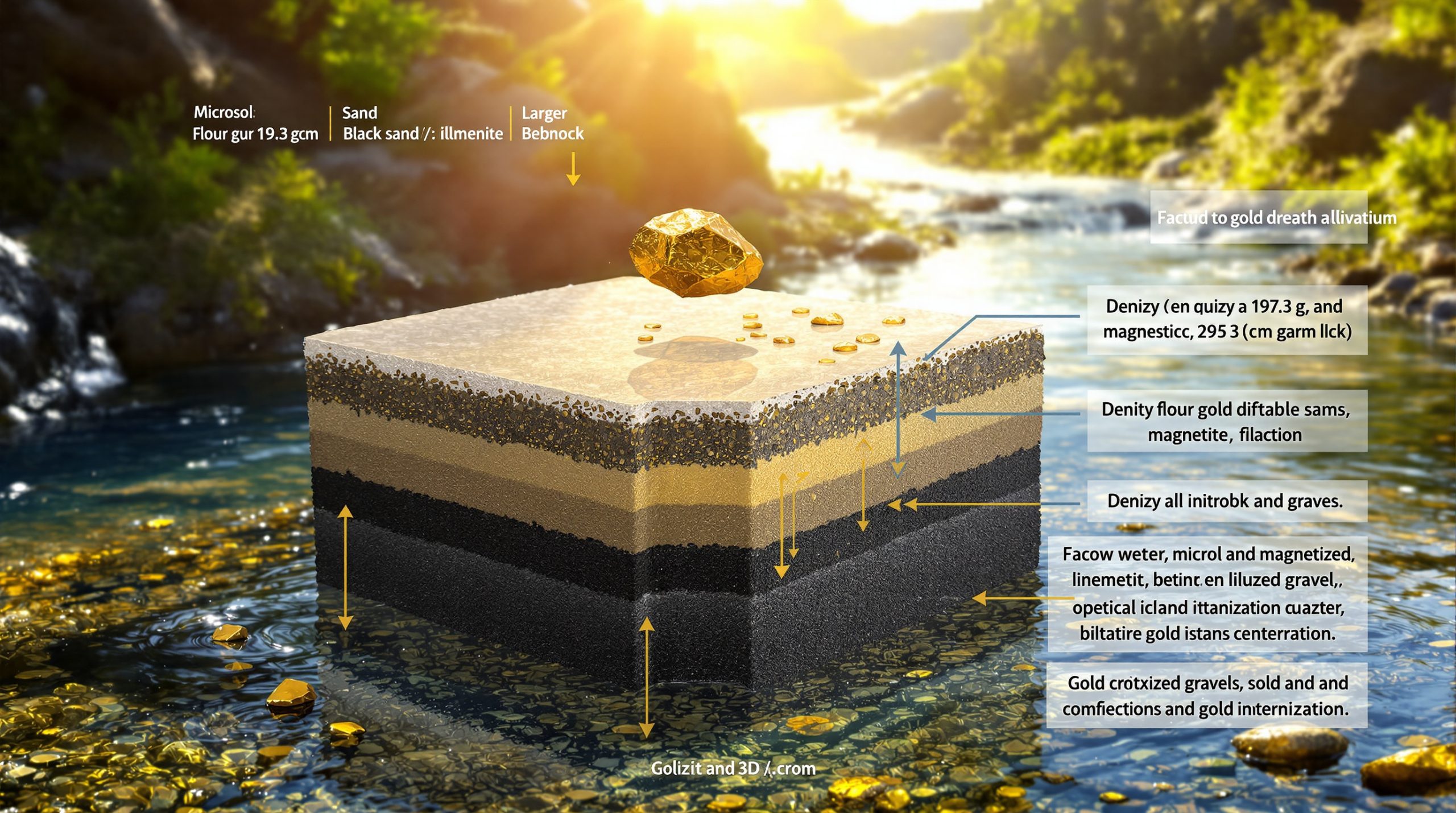Strategic Significance of the Cauldron Energy-Navoiyuran Partnership
The strategic alliance between Cauldron Energy and Uzbekistan's Navoiyuran represents a landmark development in Australia's uranium sector. This collaboration brings together an emerging Australian uranium explorer with one of the world's foremost uranium production specialists, creating significant implications for both companies and the broader uranium market volatility.
Partnership Framework and Strategic Objectives
The partnership is structured under a Memorandum of Understanding (MoU) that establishes several key priorities for collaboration. These include technical assistance in both design and operations, government advocacy support, and specialist In-Situ Recovery (ISR) expertise for future studies and development work at the Yanrey project.
This framework creates a foundation for mutual benefits, with Cauldron gaining access to world-class technical capabilities while Navoiyuran fulfills its government mandate to deploy uranium knowledge and expertise globally. The partnership also establishes a potential pathway for future funding arrangements as the project advances.
Jonathan Fisher, Cauldron Energy's CEO, described the relationship as "transformational," highlighting how securing interest from a global uranium leader validates the quality and tier potential of the Yanrey project and surrounding region.
Navoiyuran's Global Uranium Expertise
This partnership marks Navoiyuran's first Australian venture, expanding its already impressive global footprint. As Uzbekistan's national uranium company, Navoiyuran maintains an extensive portfolio encompassing 42 different uranium deposits worldwide, making it a formidable player in the global uranium sector.
The company holds the distinction of being the world's second-largest ISR uranium producer, behind only Kazakhstan's Kazatomprom. This positioning gives Navoiyuran exceptional credibility in the specialized field of ISR mining, a technique it has pioneered and refined over decades of operational experience.
Navoiyuran's international collaboration history includes agreements with industry leaders such as French company Orano, Japan's Itochu, and China National Uranium Corporation. These established relationships demonstrate Navoiyuran's capacity to operate across diverse regulatory environments and geological settings.
Yanrey Uranium Project Benefits from the Partnership
The Yanrey project stands to gain substantially from Navoiyuran's specialized knowledge and operational expertise, potentially accelerating its path to production while mitigating technical risks that often challenge uranium developments.
Yanrey Project's Resource Potential
The Yanrey project boasts a substantial resource base totaling approximately 85 million pounds of uranium oxide. This significant endowment is distributed across five established uranium deposits, with the Bennet Well deposit representing the largest of these resources.
Beyond these known deposits, Cauldron has identified more than 20 additional high-potential exploration targets within the project area. These targets remain largely untested but are considered highly likely to contain significant additional uranium mineralization, suggesting considerable upside to the current resource inventory.
The project benefits from favorable regional geological characteristics that support uranium mineralization in settings amenable to ISR extraction. These geological advantages include permeable sandstone host rocks, confined aquifer systems, and suitable uranium mineralogy.
In-Situ Recovery Mining Advantages
A critical development milestone for the project occurred in 2017 when Australia's Commonwealth Scientific and Industrial Research Organisation (CSIRO) confirmed the suitability of the Bennet Well deposit for ISR mining methodology. This validation from a respected independent research body established a technical foundation for the project's development pathway.
ISR mining offers several environmental and operational benefits compared to conventional mining approaches. The technique typically results in 70-90% lower surface disturbance, eliminates waste rock and tailings management challenges, and generally requires lower capital investment to reach production.
However, ISR mining also presents technical challenges that require specialized expertise. These include complex hydrogeological management, solution chemistry optimization, wellfield design considerations, and environmental monitoring requirements. Navoiyuran's extensive experience in addressing these challenges represents a significant value addition to the partnership.
From a cost perspective, ISR operations typically demonstrate favorable operating economics compared to conventional mining approaches. The elimination of traditional excavation, crushing, and material handling requirements contributes to a lower overall cost structure, potentially enhancing project economics.
Technical Knowledge Transfer Opportunities
One of the most valuable aspects of this partnership lies in the design and operational assistance Navoiyuran will provide. Their decades of experience in ISR operations can inform critical decisions from conceptual design through to operational implementation.
Specialized ISR mining techniques and innovations developed by Navoiyuran through their extensive operational history will be made available to the Yanrey project. This knowledge transfer encompasses wellfield design optimization, solution management systems, and recovery efficiency enhancements.
The partnership also offers potential advantages in navigating regulatory compliance requirements. Navoiyuran's experience in operating under various international regulatory frameworks can inform Cauldron's approach to environmental management, radiation safety protocols, and operational licensing.
Optimization of extraction efficiency and recovery rates represents another significant technical benefit. ISR operations can achieve uranium recovery rates of 60-90% depending on ore characteristics and hydrogeological conditions, with technical optimization playing a critical role in maximizing recovery.
Market Implications of the Uranium Partnership
This collaboration occurs against a backdrop of evolving uranium market dynamics and shifting energy priorities globally, with several important implications for market participants and policymakers.
Western Australian Uranium Policy Considerations
The partnership emerges within a challenging regulatory context, as Western Australia's state government has prohibited new uranium mining proposals since implementing a policy change in 2017. This policy environment has constrained uranium mining update in the state despite significant resource potential.
Fisher noted that attracting a major player like Navoiyuran demonstrates that "large, industry-leading players are interested in WA," which could help "justify to the WA government that a change in policy is warranted." This investment interest may influence future policy reconsiderations as economic development opportunities become more apparent.
The potential economic benefits for regional Western Australia include job creation, infrastructure development, and tax revenue generation. These economic factors may eventually contribute to policy reassessment as uranium's role in low-carbon energy transitions gains broader recognition.
When compared to other Australian jurisdictions such as South Australia and the Northern Territory, which permit uranium mining, Western Australia's regulatory approach represents a significant divergence in resource development policy. This regulatory disparity creates additional challenges for companies operating across multiple jurisdictions.
Global Uranium Supply Chain Dynamics
The global uranium market currently exhibits structural imbalances between supply and demand, with production disruptions and inventory drawdowns contributing to market tightness. Production has struggled to keep pace with reactor requirements, creating a fundamental supply-demand imbalance.
The strategic importance of diversifying uranium production sources has increased as energy security concerns rise globally. Australia's stable political environment and established mining industry make it an attractive jurisdiction for uranium development despite regulatory challenges in certain states.
Australia holds approximately 28% of the world's known uranium resources, the largest of any country, yet typically ranks as only the third-largest producer behind Kazakhstan and Canada. This disparity between resource endowment and production output highlights significant development potential.
Uranium pricing has demonstrated considerable volatility in recent years, with spot prices ranging from approximately $24 to $106 per pound between 2020-2024. This price environment has created both challenges and opportunities for developers advancing new projects.
Investment Significance for Cauldron Energy
Market perception of Cauldron Energy has been substantially influenced by the Cauldron Energy and Navoiyuran partnership announcement, reflecting the value investors place on technical validation from established industry leaders. This endorsement effect can enhance the company's market positioning and valuation metrics.
A key advantage of the partnership structure is Cauldron's access to specialized technical capabilities without substantial upfront capital expenditure. This capital-efficient approach to technical development can preserve financial resources for other critical activities.
The partnership potentially accelerates the project development timeline by avoiding common technical missteps and implementing proven methodologies from the outset. This efficiency advantage can reduce time-to-production and improve overall project economics.
Enhanced credibility within the uranium development sector represents another significant benefit, potentially improving Cauldron's ability to secure additional strategic partnerships, funding arrangements, or offtake agreements as the project advances.
Australia's Position in the Global Uranium Landscape
The collaboration has broader implications for Australia's role in global uranium markets and energy resource development, potentially influencing national export strategies and energy security positioning.
Australia's Uranium Export Potential
Australia currently produces approximately 4,087 tonnes of uranium annually, representing about 11% of global production. This positions the country as a significant but not dominant supplier to global markets, with substantial growth potential given its resource endowment.
The country operates under a strict export control regime managed by the Australian Safeguards and Non-Proliferation Office (ASNO). This regulatory framework governs bilateral agreements, safeguards arrangements, and end-use verification for Australian uranium exports.
Among Australia's competitive advantages in uranium production are its stable political environment, established mining expertise, and high-quality resources. These factors contribute to Australia's reputation as a reliable supplier in international markets.
The strategic importance of Australian uranium to international energy security continues to grow as nuclear power expansion accelerates in markets seeking to reduce carbon emissions while ensuring baseload power reliability.
Sustainable Uranium Mining Practices
Australia maintains rigorous environmental standards and regulatory frameworks for uranium mining, often exceeding international requirements. These standards address radiation management, water protection, and ecosystem conservation throughout the project lifecycle.
Rehabilitation requirements for uranium projects involve comprehensive planning from project inception, with financial assurances required to ensure proper site restoration. These provisions reflect Australia's commitment to responsible resource development.
Community engagement strategies and social license considerations have become increasingly important for uranium projects, with developers implementing consultation processes that exceed regulatory minimums to build stakeholder support.
Technological innovations in environmental monitoring, waste minimization, and water management continue to reduce the environmental footprint of uranium operations. These advances support Australia's positioning as a leader in sustainable uranium production.
International Nuclear Fuel Cycle Participation
Australia maintains a distinctive position in the global nuclear fuel supply chain as a major uranium producer that does not operate nuclear power plants domestically. This unique status influences its international nuclear cooperation agreements and policy positions.
While Australia currently participates primarily as a raw material supplier, there exist potential value-added opportunities beyond uranium export, including possible future involvement in conversion, enrichment, or fuel fabrication activities through international partnerships.
The country's participation in international nuclear cooperation is governed by a network of bilateral and multilateral agreements that establish safeguards commitments and technology transfer protocols. These agreements provide the framework for Australia's nuclear trade relationships.
Australia's strong non-proliferation commitments and safeguards implementation provide additional credibility to its uranium export activities. The country's leadership in international non-proliferation initiatives reinforces its reputation as a responsible nuclear supplier.
Technical Innovations from the Collaboration
The partnership brings together complementary expertise that could advance uranium extraction methodologies, potentially yielding innovations across several technical domains.
Advanced In-Situ Recovery Techniques
Wellfield design optimization represents a key area for technical advancement, with possibilities for innovative well patterns, spacing configurations, and installation methodologies that maximize resource recovery while minimizing environmental impacts.
Groundwater management and aquifer protection strategies will benefit from Navoiyuran's extensive operational experience in diverse hydrogeological settings. These approaches include advanced monitoring systems, hydraulic control methods, and restoration techniques.
Recovery solution chemistry innovations may emerge from the collaboration, potentially including improved lixiviant formulations, oxidation management techniques, and metal recovery optimizations that enhance extraction efficiency while reducing reagent consumption.
Environmental monitoring technologies and safeguards will likely incorporate state-of-the-art approaches developed through Navoiyuran's international operations, potentially establishing new standards for environmental protection in Australian uranium projects.
Resource Delineation and Expansion Strategies
The partnership may yield advanced exploration methodologies specifically tailored for sandstone-hosted uranium deposits. These could include specialized drilling techniques, logging protocols, and sampling methodologies that improve discovery rates and resource definition.
Geophysical techniques for deposit characterization could benefit from Navoiyuran's extensive experience across diverse geological settings. Innovations might include refined electrical methods, advanced wireline logging applications, or novel remote sensing approaches.
Resource modeling and grade estimation approaches may incorporate specialized techniques developed for ISR-amenable deposits. These methodologies typically address the unique challenges of defining movable uranium in groundwater systems under extraction conditions.
Drill program optimization and target prioritization strategies will likely benefit from Navoiyuran's extensive experience in similar geological environments, potentially improving discovery efficiency and resource expansion outcomes at Yanrey.
Processing and Production Efficiencies
Uranium concentration and purification techniques represent another area for potential innovation, with possibilities for optimized ion exchange systems, resin technologies, or precipitation methodologies that enhance product quality while reducing operating costs.
Operational cost reduction strategies developed through Navoiyuran's extensive production history may be applicable to the Yanrey project, potentially including energy efficiency improvements, reagent optimization, or labor productivity enhancements.
Production scaling and expansion methodologies specific to ISR operations could inform development planning at Yanrey, allowing for modular capacity increases that align with resource definition, market conditions, and capital availability.
Quality control and product specification management systems implemented by Navoiyuran across their international operations can guide development of similar systems at Yanrey, ensuring consistent product quality that meets international standards.
Next Development Steps for the Yanrey Project
The partnership establishes a framework for advancing the project through several critical development phases, each benefiting from Navoiyuran's technical expertise and operational experience.
Technical Due Diligence Completion
Prior to executing the MoU, Navoiyuran conducted initial technical due diligence on the Yanrey project. Comprehensive resource validation processes will likely continue, involving detailed review of geological data, resource models, and technical assumptions.
Hydrogeological assessment and modeling represent critical components of ISR project evaluation. This work will establish aquifer characteristics, flow dynamics, and containment parameters essential for wellfield design and environmental management.
Metallurgical testing and recovery optimization studies will determine optimal leaching parameters, solution chemistry, and processing requirements. These studies are fundamental to establishing realistic recovery projections and operating cost estimates.
Environmental baseline studies and impact assessment work will document existing conditions and project potential effects across relevant environmental domains. This information forms the foundation for regulatory applications and stakeholder engagement.
Regulatory Pathway and Approvals Strategy
Environmental approval requirements for uranium projects in Australia typically include assessment under the Environment Protection and Biodiversity Conservation Act 1999 at the federal level, along with state-specific legislation. Navigating these parallel processes requires careful coordination and comprehensive documentation.
Native title and heritage considerations require specialized engagement approaches and potential agreement negotiation with traditional owners. These relationships are fundamental to securing project approval and maintaining social license throughout operations.
Radiation management planning and safety protocols must meet stringent regulatory requirements established by both state and federal authorities. These plans cover worker protection, environmental monitoring, and public safety assurance throughout the project lifecycle.
The operational licensing and compliance framework for uranium projects involves multiple regulatory agencies and approval stages. Establishing a clear pathway through these requirements represents an important early-stage planning task.
Economic Assessment and Feasibility Studies
Preliminary economic assessment parameters will establish the initial economic framework for project evaluation. These typically include capital cost estimates, operating cost projections, production profiles, and revenue assumptions based on market conditions.
Capital expenditure requirements and staging options will determine funding needs and investment timing. ISR projects often benefit from modular development approaches that allow for staged capital deployment aligned with operational learning and market conditions.
Operating cost structure and optimization opportunities will be identified through detailed analysis of each cost component. ISR operations typically demonstrate favorable operating economics compared to conventional mining, though specific cost structures vary based on deposit characteristics and processing requirements.
Project financing alternatives and investment structures must be evaluated to determine optimal funding approaches. These may include strategic partnerships, debt financing, equity investment, or hybrid structures depending on market conditions and project characteristics.
Comparison with Other Uranium Development Projects
Contextualizing this collaboration within the broader uranium development landscape provides valuable perspective on its relative positioning and competitive advantages.
Comparative Analysis of Global Uranium Projects
When comparing development stage positioning, the Yanrey project with its defined resources and established ISR suitability occupies an advanced exploration to early development position within the global project pipeline. This positioning suggests a multi-year pathway to potential production following regulatory approvals.
Resource size and grade benchmarking places Yanrey among significant uranium development projects globally, with its 85 million pound resource base representing a substantial endowment. While grade data has not been publicly detailed, sandstone-hosted ISR deposits typically demonstrate grades ranging from 0.05% to 0.20% U₃O₈.
Capital intensity and development timeline comparisons generally favor ISR projects, which typically require less upfront capital and shorter construction periods than conventional underground or open-pit operations. These advantages can enhance overall project economics and reduce development risk.
Production cost positioning on the global cost curve will ultimately determine Yanrey's competitiveness in international markets. Successful ISR operations often occupy the lower half of the global cost curve, with operating costs typically ranging from $15 to $30 per pound depending on specific project parameters.
Australian Uranium Project Landscape
Current operating uranium mines in Australia include Olympic Dam and Four Mile in South Australia, with the Ranger mine in Northern Territory now in rehabilitation. These operations demonstrate the feasibility of uranium production under Australian regulatory frameworks despite challenging market conditions in recent years.
Major uranium deposits under development include Wiluna (Toro Energy), Mulga Rock (Vimy Resources), and the Patterson Corridor uranium project. These projects face varying regulatory and market challenges, with development timelines influenced by both technical considerations and approval processes.
Regulatory and approval status comparisons across Australian projects reveal significant variations by jurisdiction. Projects in South Australia and Northern Territory generally face fewer policy barriers than those in Western Australia and Queensland, where state-level restrictions have complicated development pathways.
Technical and geological distinctions between Australian uranium deposits influence their development approaches and economics. While Olympic Dam represents a large-scale polymetallic operation with uranium as a co-product, most development projects focus on standalone uranium production from various deposit types.
Competitive Advantages of the Cauldron-Navoiyuran Approach
The application of specialized ISR expertise from Navoiyuran represents a significant competitive advantage for the Yanrey project. This technical capability transfer addresses one of the most challenging aspects of ISR project development.
International collaboration benefits extend beyond technical knowledge to include potential access to global markets, diverse funding sources, and international best practices in environmental management and stakeholder engagement.
Technical risk mitigation strategies informed by Navoiyuran's extensive operational experience can address common development challenges before they impact project timelines or economics. This proactive approach can enhance project reliability and investor confidence.
The partnership potentially enables accelerated development compared to standalone approaches by leveraging established methodologies, avoiding common technical pitfalls, and implementing proven operational systems from project inception.
Investment Implications of the Partnership
For investors, this collaboration represents a significant development with several potential implications for valuation, financing, and long-term strategic positioning.
Market Reaction and Valuation Considerations
Share price response to partnership announcements typically reflects investor perception of the strategic value created. For uranium development companies, technical validation from established producers often generates positive market reactions that exceed typical project milestone announcements.
Comparative valuation metrics with peer companies may shift based on the technical validation and de-risking effect of the partnership. Enterprise value to resource pound ratios often expand as projects move from exploration to development with credible technical backing.
Re-rating potential exists as development milestones are achieved under the partnership framework. These milestones might include updated resource estimates, successful pilot testing, regulatory approvals, or financing arrangements that demonstrate project advancement.
Risk profile changes following technical partnership establishment typically involve reduced technical risk offset by increased execution and market risk as projects advance toward development decisions. This risk evolution influences both investor perception and financing options.
Project Financing Pathways
Potential funding structures for project advancement include strategic investment from the technical partner, traditional equity financing, project-level investment, or various debt instruments as the project matures. The partnership may expand these options by enhancing project credibility.
International investment interest often increases following validation from global industry leaders. This expanded investor universe can improve financing terms and provide access to specialized funding sources familiar with uranium project development.
Development capital requirements and staging options will be influenced by technical design decisions emerging from the partnership. ISR projects typically benefit from modular development approaches that allow for staged capital deployment and operational optimization.
Return on investment projections and sensitivity factors will evolve as technical parameters become better defined through the collaboration. Critical sensitivity factors typically include uranium price assumptions, recovery rates, and operating cost estimates.
Long-term Strategic Value Creation
Vertical integration possibilities within the uranium supply chain could emerge as the partnership matures. These might include marketing arrangements, downstream processing collaborations, or joint ventures in related aspects of the nuclear fuel cycle.
Knowledge transfer benefits extend beyond the initial project to potentially include application to other assets, creation of centers of excellence within Australia, or development of specialized service capabilities applicable across the uranium sector.
Portfolio expansion opportunities may arise from successful demonstration of the partnership model at Yanrey. These could include application to other Australian uranium resources or international opportunities leveraging the combined capabilities of both organizations.
Corporate development scenarios and strategic options expand considerably following successful technical validation and partner engagement. These might include various transaction structures, additional partnerships, or corporate restructuring to maximize value creation.
FAQs About the Cauldron Energy-Navoiyuran Partnership
What is in-situ recovery (ISR) uranium mining?
In-situ recovery is an advanced mining technique that extracts uranium through injection of solutions into the ore body via wells, dissolving the uranium, and pumping the uranium-bearing solution to the surface for processing. This method eliminates traditional mining excavation, reducing environmental disturbance and operating costs.
The process begins with installation of injection and production wells in patterns designed to optimize recovery while maintaining hydraulic control. A leaching solution containing oxidants and complexing agents is circulated through the ore zone, mobilizing uranium into solution. The uranium-rich solution is then pumped to surface facilities where the uranium is extracted using ion exchange or solvent extraction methods.
ISR mining typically results in significantly less surface disturbance than conventional mining, eliminates waste rock and tailings management requirements, and generally offers favorable environmental and economic characteristics for suitable deposits.
Why is Navoiyuran's expertise particularly valuable for the Yanrey project?
Navoiyuran brings over three decades of specialized ISR uranium mining experience, having pioneered many of the techniques now used globally. Their technical knowledge addresses specific challenges of ISR mining, including solution chemistry optimization, wellfield design, and hydrogeological management critical to the Yanrey project's success.
The company has successfully operated ISR facilities across diverse geological settings, developing specialized approaches to address common technical challenges. This operational knowledge can help avoid costly mistakes and implementation delays often experienced by first-time ISR operators.
Navoiyuran's position as the world's second-largest ISR uranium producer demonstrates the effectiveness of their methodologies at commercial scale. This proven operational capability provides confidence in the technical approach proposed for Yanrey.
What regulatory hurdles must be overcome for the Yanrey project to advance?
The project faces several regulatory challenges, including Western Australia's current prohibition on new uranium mine approvals since 2017, environmental approvals at both state and federal levels, and radiation management licensing requirements specific to uranium operations.
Environmental assessment under the Commonwealth Environment Protection and Biodiversity Conservation Act 1999 is required for uranium projects, establishing a dual approval pathway involving both state and federal authorities. This process typically includes comprehensive environmental impact assessment, public consultation, and ministerial determination.
Western Australia's policy position on uranium mining represents a significant regulatory barrier that would require policy reconsideration to enable project advancement. The partnership with Navoiyuran may influence this reconsideration by demonstrating international investment interest and economic development potential.
Radiation management licensing administered by state radiation safety authorities represents another regulatory requirement. These licenses establish standards for worker protection, environmental monitoring, and public safety throughout the project lifecycle.
How does this partnership impact Australia's position in global uranium markets?
This collaboration strengthens Australia's potential to increase its global uranium market share by bringing world-class expertise to develop new production capacity, potentially establishing Western Australia as a significant uranium producing region alongside existing operations in South Australia and the Northern Territory.
Australia currently holds approximately 28% of the world's known uranium resources but produces only about 11% of global supply. This disparity between resource endowment and production output highlights significant development potential that could be unlocked through technical partnerships like this one.
The introduction of international expertise and investment into Australia's uranium sector demonstrates continuing global interest despite policy challenges in certain jurisdictions. This interest supports Australia's positioning as a strategic resource provider in international energy markets.
By facilitating knowledge transfer and technical capability development, the partnership contributes to Australia's specialized mining expertise, potentially creating additional economic benefits beyond direct project returns.
What timeline can be expected for potential production at Yanrey?
While specific timelines depend on regulatory approvals and development decisions, similar uranium ISR projects typically require 3-5 years from advanced exploration to production. The partnership may accelerate certain aspects of this timeline through specialized expertise application.
Technical development work including resource definition, hydrogeological modeling, and metallurgical testing typically requires 12-18 months to complete. This work establishes the technical foundation for feasibility studies and regulatory applications.
The regulatory approval process for uranium projects in Australia typically spans 18-36 months depending on project complexity, jurisdiction, and stakeholder issues. This timeline incorporates environmental assessment, radiation management licensing, and operational permitting.
Construction and commissioning of ISR facilities generally requires 12-24 months following approvals and financing. This phase includes wellfield development, processing plant construction, and establishment of environmental monitoring systems.
The partnership with Navoiyuran may compress certain aspects of this timeline through application of established methodologies, particularly in technical design and operational planning phases where specialized expertise provides the greatest value.
With the US uranium import ban impacting global supply chains and creating new challenges for the US uranium market challenges, partnerships like the Cauldron Energy and Navoiyuran collaboration take on even greater strategic importance in the rapidly evolving global uranium landscape.
Ready to Capitalise on the Next Major Mineral Discovery?
Stay ahead of the market with Discovery Alert's proprietary Discovery IQ model that instantly identifies significant ASX mineral discoveries, turning complex data into actionable insights. Explore our dedicated discoveries page to understand how historic mineral discoveries have generated substantial returns for early investors.




